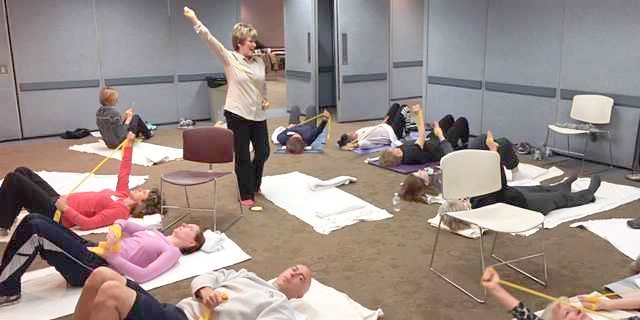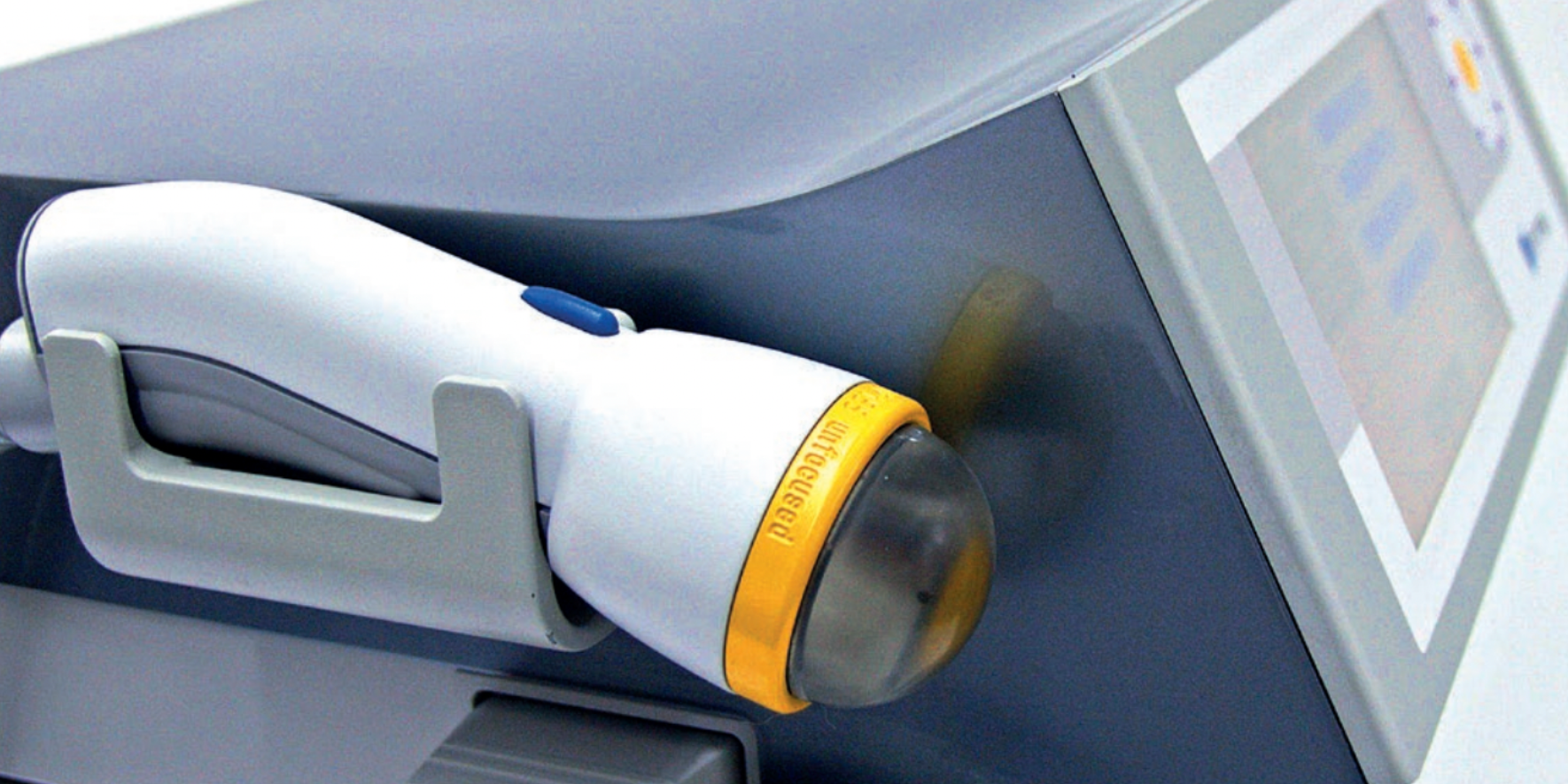
As of February 2025, 574 bills that restrict the rights of transgender people have been introduced in 48 states.1 Many of these bills seek to limit the inclusion of transgender and nonbinary people, including limiting educational discussions (both anti-LGBTQ+ and gender-focused) and limitations on access to public places or services (e.g., bathrooms). Twenty-five states have now banned best practice medical and surgical treatments for transgender youth2. More notably, in six of these states, providing some of these best practice treatments is now a felony2.
These legislative actions directly contradict the clear positions of leading medical groups, including but not limited to the American Medical Association, the American Academy of Pediatrics, and the World Health Organization, all of which support access to gender-affirming care. The impact of these anti-transgender laws is devastating. Young transgender and nonbinary people living in these states with bans on gender-affirming care are suffering, with suicide attempts spiking by 7% to 72% over the prior year.3 Transgender adults are not immune to the effects of these regressive laws, as they are also experiencing increased rates of depression and anxiety.
Furthermore, while these laws are aimed at impacting transgender and gender diverse populations, they are negatively impacting intersex populations as well. Many of these laws restrict gender-affirming care for transgender, gender nonconforming, and nonbinary (TGD) people, but there are exceptions within these laws that allow non-consensual, non-medically necessary, usually genital-based, surgeries on intersex infants and children to continue. Per the Human Rights Watch, “These surgeries have been deemed human rights violations by the United Nations High Commissioner for Human Rights, the World Health Organization, and other authorities.”6
Not only are transgender laws impacting intersex youth, but recent government orders are as well. In January 2025, the United States government released an executive order that redefined what the words “sex,” “male,” and “female” mean.7 InterACT Advocates for Intersex Youth issued a statement that this order “disrespects the complexity of gender by reducing it to the production of eggs and sperm, entirely fails to consider the existence of intersex people.”5
InterACT further mentions that even cisgender intersex folx may be impacted by this Executive Order stating “Notably, the Executive Order may invalidate a cisgender intersex person’s understanding of their own gender, too. A woman with Complete Androgen Insensitivity (CAIS) may be assigned female at birth, and identify as a woman all her life while having internal testes – yet the Order would define her sex by her gonads and the reproductive cells they produce.”5
Intersex folx historically have had their existence and identities erased, pathologized, and stigmatized. InterACT says that “All people, including young intersex and transgender people, deserve to be respected for who they are.”5 The remote course, Intersex Patients: Rehab and Inclusive Care led by Molly O'Brien-Horn, PT, DPT, CLT, addresses how to be an ally in healthcare to and how to provide better, intersex-affirming healthcare to Intersex folx. The next course offering is on May 3, 2025.
 The American Civil Liberties Union (ACLU) published a research brief on the impacts of these laws and policies stating in part, “These anti-transgender laws are accomplishing exactly what they were designed to do, i.e. prevent youth from obtaining gender-affirming care, reduce gender-affirming care access for adults, prevent transgender and nonbinary people from using correct facilities or participating in sports, or censor education. These impacts are concerning enough; however, the collateral consequences of these laws are also devastating. A growing body of research indicates that these restrictive laws and the surrounding rhetoric are instilling fear, reducing safety, and increasing violence against LGBTQ+ people and their allies.“ Although it can seem frightening and daunting to step up and be an ally, it is what the world needs of all of us, especially in unprecedented times.
The American Civil Liberties Union (ACLU) published a research brief on the impacts of these laws and policies stating in part, “These anti-transgender laws are accomplishing exactly what they were designed to do, i.e. prevent youth from obtaining gender-affirming care, reduce gender-affirming care access for adults, prevent transgender and nonbinary people from using correct facilities or participating in sports, or censor education. These impacts are concerning enough; however, the collateral consequences of these laws are also devastating. A growing body of research indicates that these restrictive laws and the surrounding rhetoric are instilling fear, reducing safety, and increasing violence against LGBTQ+ people and their allies.“ Although it can seem frightening and daunting to step up and be an ally, it is what the world needs of all of us, especially in unprecedented times.
As access to vital care is being challenged, pelvic rehabilitation practitioners have a powerful role in supporting transgender, intersex, and gender diverse people. We can be thoughtful listeners to our patients’ stories, and we can use their chosen names and pronouns. If you’re someone new to chosen names and pronouns, be reassured that no one expects perfection from you when you start out. We all get better with practice. If you need a refresher, check out this simple refresher from the Gay, Lesbian & Straight Education Network. The Herman & Wallace course, Inclusive Care for Gender and Sexual Minorities instructed by Brianna Durand, is also an excellent starting point in learning up-to-date, in-depth knowledge of the various terminology while emphasizing clinical interactions, available research, and professional accountability.
When it comes to pelvic health interventions for trans people who have not had genital surgery, I often encourage clinicians to focus on the basics. The vast majority of pelvic health concerns improve with breathing activities, trunk coordination and strengthening, and mindfulness training. Feel empowered to reach out to rehabilitation forums or mentors for assistance in selecting or adjusting interventions. Also, know who the prescribing medical providers are in your community. Some patients need more testing than PTs and OTs can do. Make yourself part of a strong team.
Clinicians who are ready to be leaders in gender-affirming rehabilitation can take additional training to better understand the nuances of surgery recoveries and interventions. The remote course, Transgender Health for the Rehab Professional: Genital Gender Affirming Surgery Considerations, led by Sandra Gallagher, PT, DPT, WCS and Ken McGee, PT, DPT is a great step. Typical coursework covers dilator progression after vaginoplasty, return to activity after gender-affirming surgery, and understanding the impacts of hormones on pelvic function. The next offering is on April 12, 2025.
If you are looking for more ways to get involved, consider joining the PT Proud Special Interest Group of the Academy of Leadership and Innovation. Protecting and advancing gender-affirming care requires advocacy outside the clinic. The current legislative climate might seem daunting, but the recent court rulings favoring bodily autonomy and the proliferation of shield law for healthcare workers providing gender-affirming care is heartening.
Each of us has the power to make a meaningful difference in the lives of transgender, intersex, and gender-diverse clients. Let’s commit to our ethical duty of justice—ensuring fair and equitable treatment for all, regardless of gender identity—and beneficence—promoting the well-being of every individual we serve.

References
- 2025 Anti-Trans Bills: Trans legislation tracker. 2025 Anti-Trans Bills: Trans Legislation Tracker. Accessed February 22, 2025. https://translegislation.com/.
- Bans on Best Practice Medical Care for Transgender Youth. Movement Advancement Project. February 2025. Accessed February 22, 2025. https://www.lgbtmap.org/equality-maps/healthcare_youth_medical_care_bans.
- American Civil Liberties Union. (2024, September 11). The Impacts of Anti-Transgender Laws and Policies: Evidence from Empirical Research. https://www.aclu.org/publications/the-impacts-of-anti-transgender-laws-and-policies-evidence-from-empirical-
- Lee WY, Hobbs JN, Hobaica S, DeChants JP, Price MN, Nath R. State-level anti-transgender laws increase past-year suicide attempts among transgender and non-binary young people in the USA. Nat Hum Behav. 2024;8(11):2096-2106.
- InterACT Advocates for Intersex Youth. (2025, January 21). Trump’s Executive Order Ignores Science to Push Discriminatory Agenda. https://interactadvocates.org/trumps-executive-order-ignores-science-to-push-discriminatory-agenda/.
- Human Rights Watch. (2022, October 26). S. Anti-Trans Bills Also Harm Intersex Children. https://www.hrw.org/news/2022/10/26/us-anti-trans-bills-also-harm-intersex-children.
- United States Presidential Actions. (2025, January 20). Defending Women from Gender Ideology Extremism and Restoring Biological Truth to the Federal Government Executive Order. https://www.whitehouse.gov/presidential-actions/2025/01/defending-women-from-gender-ideology-extremism-and-restoring-biological-truth-to-the-federal-government/.

Today The Pelvic Rehab Report is featuring two short interviews with instructor teams Alyson Lowrey & Tara Sulivan who teach Pain Science for the Chronic Pelvic Pain Population, and Sandra Gallagher & Caitlin Smigelski who teach Transgender Patients: Pelvic Health and Orthopedic Considerations.
The Pain Science for the Chronic Pelvic Pain Population instructors Alyson N Lowrey, PT, DPT, OCS &Tara Sullivan, PT, DPT, PRPC, WCS, IF answered the following two questions:
What Is Pain?
All pain occurs in the brain. Whether it is from acute tissue injury, nerve injury, or chronic pain, all pain has to be interpreted by the brain. How do you explain to a patient that their pain may not be from tissue damage, but from their brain interpreting something as painful that shouldn’t? While their pain may be in their brain, it is NOT in their head!
Pelvic pain is complicated because of a phenomenon called pelvic organ cross-talk. Your brain has a really hard time determining which pelvic organ or muscle is having pain or sensations, so signals can get crossed. Patients can present with uterine pain that can cause bowel or bladder pain and vice versa. We commonly see this with endometriosis and interstitial cystitis. Another example is the prostate and bladder. Prostatitis may present as an overactive bladder. This makes our jobs more difficult because we have to be able to determine the true source of a patient’s pain and understand that their pain may not be coming from an obvious source.
What is pain neuroscience education (PNE) and how can it be used?
Pain neuroscience education (PNE) is the explanation of the neurophysiological changes in the central nervous system to patients that have chronic pain. It is explaining pain, sensitization, and all the factors that can be contributing to their pain and abnormal sensations.
PNE typically decreases the threat value of pain, diminishes catastrophic thinking about pain, and facilitates a more active coping strategy. In the Pain Science for the Chronic Pelvic Pain Population, you will leave with the tools to combine pain science education with current interventions for a more effective treatment.
The Transgender Patients: Pelvic Health and Orthopedic Consideration instructors Sandra Gallagher, PT, DPT, WCS & Caitlin Smigelski, PT, DPT answered the following two questions:
What made you want to create this course?
We created this course on rehabilitation in gender-affirming care in 2018 because, at that time, nothing like it existed. We had learned so much from working with patients preparing for surgery and knew we need more information. Through attending conferences, we had opportunities to talk with experts in the field including surgeons, endocrinologists, primary care physicians, and social workers. Combined with researching additional topics, we made the course we wish we could have taken: a course that bridges physical rehabilitation considerations with medical and surgical information on transgender care.
Today, many brief courses and videos about gender-affirming care exist. You can now find courses and videos that address trauma-informed care, language aspects of gender-affirming care, and physicians and surgeons speaking on their procedures. We think this is great and encourage people to continue to seek out these learning opportunities! Our goal is to expand on the perspective of the rehab professional by offering a course that has both depth and breadth.
Our course has evolved to a hybrid format with pre-recorded self-paced lectures and live webinar content. We know that some participants are well versed in LGBTQ topics and are trained in providing trauma-informed care. For other participants, our course may be the first time they are exploring topics like sex, gender, sexuality, trauma-informed care, and gender-affirming language. The content in the pre-recorded lectures allows participants to work at their own pace, whether it is review or brand new information and allows everyone to have a similar foundation when we meet for the live portion.
What is your message to practitioners about gender-affirming care?
Our message to participants who are just starting their journey on gender-affirming care is to remember that gender is not genitals and that undergoing gender-affirming procedures is not strictly about sexual activity options. Sometimes people get so focused on the genital surgery or changes, that they forget the person. Every patient's path will be a bit different and there is more to gender-affirming care than peri-operative rehab.
Keep learning! Engage with professional organizations like WPATH, watch videos featuring gender diverse individuals, practice language with coworkers, and attend grand rounds. Many university hospitals now have virtual rounds that are available live or as recordings. There is so much information available if you search for it!

Pain Science for the Chronic Pelvic Pain Population
Course Date: October 8-9, 2022
Price:$400
Experience Level: Beginner
Contact Hours: 12
Description: This course is designed to expand the participant's knowledge, experience, and treatment in understanding and applying pain science to the chronic pelvic pain population including endometriosis, interstitial cystitis, irritable bowel syndrome, vaginismus, vestibulodynia, primary dysmenorrhea, and prostatitis. This course provides a thorough introduction to pain science concepts including classifications of pain mechanisms, peripheral pain generators, peripheral sensitization, and central sensitization in listed chronic pelvic pain conditions; as well as treatment strategies including therapeutic pain neuroscience education, therapeutic alliance, and the current rehab interventions' influence on central sensitization.
Lecture topics include the history of pain, pain physiology, central and peripheral sensitization, sensitization in chronic pelvic pain conditions, therapeutic alliance, pain science and trauma-informed care, therapeutic pain neuroscience education, the influence of rehab interventions on the CNS, and specific case examples for sensitization in CPP.

Transgender Patients: Pelvic Health and Orthopedic Considerations
Course Date: October 8,2022
Price: $500
Experience Level: Beginner
Contact Hours: 17
Description: This course is appropriate for any physical rehabilitation professional, regardless of their specialty area, who has an interest in better serving people who are gender diverse. There is specific content aimed at teaching pelvic health therapists how to expand their skills for working with people of all gender identities. There will be particular education regarding gender-affirming genital surgeries as well as discussion of other gender-affirming surgeries and medical interventions that people transitioning might choose.
Often times therapists think of genital surgeries and sexual function when contemplating work with transgender people. However, therapists have far more to offer transgender patients. For providing optimal care, knowledge of the intricacies of gender transition is essential. We provide that overview in this course. Topics covered include:
- Societal influence on gender transition including interactions with health care providers
- Recognizing difference between sex, sexuality, and gender
- Understand the complexities of the legal system for the person transitioning gender
- Tips and tools for a trauma-informed intake and examination
- Health effects of hormones for gender transition as related to differential diagnosis in rehabilitation
- Supporting healing after gender-affirming surgery
- Operative procedures for face and chest
- Operative procedures for masculinizing and feminizing genital surgery
- Pre-operative evaluation, treatment, and education issues
- Post-operative evaluation, treatment, education, and follow-up for genital surgeries
- Outcome measures with rehab focus for people undergoing gender-affirming surgeries
- Fertility and pregnancy in gender diverse people.
Holly Tanner Short Interview Series - Episode 6 featuring Sandra Gallagher
In today’s interview, Sandra discusses some of the intricacies of working with transitioning patients, her path in working with the LGBTQ+ community, and her new course with H&W. Transgender Patients: Pelvic Health and Orthopedic Considerations is a remote course created by Sandra Gallagher and Caitlin Smigelski. This course provides specific content aimed at teaching pelvic health therapists how to expand their skills for working with people of all gender identities.
Sandra Gallagher has served on varied committees and boards at the state and national level, most recently as the chair of the CAPP-OBC committee for the Academy of Pelvic Health of the APTA. She has presented on the role of PT in gender-affirming vaginoplasty at UCSF Transgender Health Summit, APTA Combined Sections Meeting, and at the 2018 international meeting of the World Professional Association for Transgender Health (WPATH).
In a research study that Sandra facilitated with other colleagues, it was concluded that “Pelvic floor physical therapists identify and help patients resolve pelvic floor-related problems before and after surgery. We find strong support for pelvic floor PT for patients undergoing gender-affirming vaginoplasty.”(1)
Often therapists think of genital surgeries and sexual function when contemplating work with transgender people. However, therapists have far more to offer transgender patients. For providing optimal care, knowledge of the intricacies of gender transition is essential.
Join H&W on October 30th for Transgender Patients: Pelvic Health and Orthopedic Considerations to learn more about gender-affirming genital surgeries and medical interventions that people transitioning might choose.
- David Jiang, Sandra Gallagher, Laura Burchill, Jens Berli, Daniel Dugi 3rd. Implementation of a Pelvic Floor Physical Therapy Program for Transgender Women Undergoing Gender-Affirming Vaginoplasty. Obstet Gynecol. 2019 May;133(5):1003-1011. doi: 10.1097/AOG.0000000000003236.
Herman & Wallace is excited to announce an upcoming course on pelvic rehab for the gender diverse patient, written and instructed by Dr. Laura Meihofer, DPT, ATC. As Dr. Meihofer indicated in a recent blog, "[t]he number of individuals who identify as transgender is growing each year. The Williams Institute estimated in 2016 that 0.6% of the U.S. population or roughly 1.4 million people identified as transgender (Flores, 2016)... With the rise of individuals who identify as transgender, gender non-binary and intersex, healthcare professionals have equally seen an influx of patients who require care throughout their discovery and transition."
The new course from Dr. Meihofer is called "Gender Diversity and Pelvic Health: Comprehensive Care for Transgender Men and Women", and it will be debuting on May 29-31, 2020 in Livingston, NJ.
Dr. Meihofer was kind enough to share some thoughts about the new course, her practice, and herself with The Pelvic Rehab Report. Thank you, Laura!
Tell us about yourself, Laura!
My name is Laura Meihofer and I’ve been a physical therapist for 7 years. I work at Mayo Clinic and I see patients throughout the gender spectrum who most commonly struggle with pelvic floor dysfunctions relating to overactive muscles such as: chronic and acute pelvic pain, urinary frequency/urgency/incontinence/hesitancy, constipation, pain with intercourse, low back and hip pain.
 What can you tell us about your new course, "Gender Diversity and Pelvic Health"?
What can you tell us about your new course, "Gender Diversity and Pelvic Health"?
Currently there are roughly 1.25 million transgender identified individuals in the United States and this number is growing. This course will help to dispel the idea of “other” when treating this demographic and demonstrate how much sameness there is when treating pelvic floor dysfunction.
These skills will greatly benefit any practice as this population is so underserved, they are looking for allies that are not just nice but competent. When you are able to successfully treat gender diverse patients, they spread the word about the great care they received and you now have a strong referral base. Taking this course opens up a whole new referral base of amazing people.
This course will not only feature videos from thought leaders in the field but will also highlight testimonials from patients and caregivers who have undergone their own gender transitions.
What essential skills does your course add to a practitioner’s toolkit?
I think the most important technique that attendees will learn will be how to assess a trans women and trans man after they have undergoing genital reconstruction surgery. Attendees will gain competence in the care of the gender diverse patient at any stage during their gender transition.
What was your inspiration to create this course for trans-identified patients?
Working at a major medical institution, I found that it was difficult finding providers in a patient’s area that were competent in care of a transgender patient. As I talked more and more with various physical therapists I realized they were thirsty for knowledge on how to serve these individuals. So I created the course!
What prepared you to create this course?
The most important thing I have done for this course is treat hundreds of patients who are trans identified throughout their gender journey. This allowed me to not only see all the medical interventions they went through but also to hear their personal journey of transition. These experiences expanded my empathy for what they go through and inspired me to search within myself on how I can be better for them. This desire to improve opened a creative well inside of me from which this course grew.
Discuss the effect conditions covered in your course have on a patient’s quality of life, your experience treating patients with this condition, and how their quality of life has increase after successful treatment.
Individuals who identify as transgender suffer from pelvic floor dysfunction just like our cis gender folks. There is no current data to capture the prevalence of pelvic floor issues in this specific population to date, however there is research to support the overall lack of care these individuals receive. Based on the results from the U.S. Transgender Survey which surveyed 28,000 respondents, the numbers in the health care field were staggering.
33% of respondents had at LEAST one negative experience with a health care provider in the last year due to being transgender. Negative experiences were qualified as verbal harassment, refusal of treatment or having to teach the health care provider about transgender people to receive appropriate care. 23% of respondents did not see a doctor when they needed to due to fear of being mistreated as a transgender person.
This course aims has two primary aims:
1) Educate providers on the unique concerns that transgender individuals experience related to hormone replacement and surgical techniques.
2) Equip attendees to provide competent care for this demographic
Join Dr. Meihofer for Gender Diversity and Pelvic Health this May 29-31, 2020 in Livingston, NJ!
The number of individuals who identify as transgender is growing each year. The Williams Institute estimated in 2016 that 0.6% of the U.S. population or roughly 1.4 million people identified as transgender (Flores, 2016). This was a 50% increase from a 2011 survey which estimated only 0.3% or 700,000 people identified as transgender (Gates, 2011). Though these numbers are growing each year, due to increased visibility and social acceptance, it is presumed that these numbers are underreported due to inadequate survey methods, stigma/fear associated with “coming out” and deficient definitions of the multitude of options for gender identity (Flores, 2016).

Though organizations such as WPATH have attempted to standardized care, the patient experience and reception of quality care are significantly lacking. In 2015 the National Center for Transgender Equality performed a groundbreaking survey of 27,215 respondents with the aim to “understand the lives and experiences of transgender people in the United States and the disparities that many transgender people face” (“About,”n.d., para. 1). This survey revealed that 33% of individuals who saw a health care provider had at least one negative experience related to being transgender (National Center for Transgender Equality, 2015). Negative experiences included; being refused treatment, verbal harassment, physically or sexually assault, and teaching the provider about transgender people in order to get appropriate care (National Center for Transgender Equality, 2015). Alternatively, 23% of respondents did not see a doctor when they needed to because of fear of being mistreated as a transgender person (National Center for Transgender Equality, 2015). Though these statistics are staggering and affronting there is hope for a better future.
Research for the care of these patients, specifically related to pelvic floor physical therapy, is on the rise. In the Annals of Plastic Surgery, an article was published with the purpose to capture incidence and severity of pelvic floor dysfunction pre-surgery, monitor any progression of symptoms with standardized outcome measures and highlight the role of physical therapy in the treatment of patients undergoing vaginoplasty (Manrique, et al., 2019). While in the Journal of Obstetrics & Gynecology a retrospective case series similarly focused on physical therapy pre and post-operatively highlighting dilator selection and success, pelvic floor dysfunction including bowel and bladder as well as reported abuse history (Jiang, Gallagher, Burchill, Berli, & Dugi, 2019). Through articles such as these clinicians can expect an uptick in calls questioning if they treat these patients. This begs the question of, "How can you best prepare?"
The answer is simple, attend continuing education. It is where you can not only learn evidence-based evaluation and treatment but also connect with other providers and mentors that care for these patients. In 2020 Herman & Wallace will be offering a continuing education course that serves this exact purpose. Keep your eyes on next years offerings, as spaces will surely fill quickly.
About. (n.d.). Retrieved May 15, 2019, from http://www.ustranssurvey.org/about
Dora Richter. (2019, May 09). Retrieved May 15, 2019, from https://en.wikipedia.org/wiki/Dora_Richter
Jiang, D. D., Gallagher, S., Burchill, L., Berli, J., & Dugi, D. (2019). Implementation of a Pelvic Floor Physical Therapy Program for Transgender Women Undergoing Gender-Affirming Vaginoplasty. Obstetrics & Gynecology,133(5), 1003-1011. doi:10.1097/aog.0000000000003236
Manrique, O. J., Adabi, K., Huang, T. C., Jorge-Martinez, J., Meihofer, L. E., Brassard, P., & Galan, R. (2019). Assessment of Pelvic Floor Anatomy for Male-to-Female Vaginoplasty and the Role of Physical Therapy on Functional and Patient-Reported Outcomes. Annals of Plastic Surgery,82(6), 661-666. doi:10.1097/sap.0000000000001680
National Center for Transgender Equality. (2015). Annual report of the U.S. Transgender Survey. Retrieved May 15, 2019, from https://transequality.org/sites/default/files/docs/usts/USTS-Executive-Summary-Dec17.pdf
Wpath. (n.d.). Standards of Care version 7. Retrieved May 15, 2019, from https://www.wpath.org/publications/soc










































